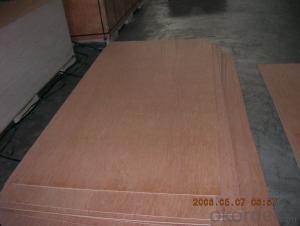Plywood is a versatile and widely used material in the world of construction and home improvement. It’s made from thin layers of wood veneer, known as plies, that are glued together under heat and pressure. Plywood is favored for its strength, durability, and affordability, making it an excellent choice for a variety of applications. But with so many sizes and types available, how do you choose the perfect fit for your project? Let’s dive into the world of plywood and explore the different sizes and how to select the one that’s right for you.
Understanding Plywood Sizes
Plywood comes in a variety of standard sizes, but the most common are 4X8 feet, which is the standard sheet size in the United States. Other sizes include 4X10 feet and 5X5 feet, but these are less common and may be harder to find. The thickness of plywood can also vary, with common options being 1/4 inch, 1/2 inch, 3/4 inch, and 1 inch. These measurements refer to the nominal thickness, which means the actual thickness may be slightly less due to the manufacturing process.
The Beauty of Plywood in Interior Design
Plywood isn’t just for construction; it’s also a popular material in interior design. Its natural wood grain pattern can add warmth and texture to any room. Whether you’re building furniture, creating decorative wall panels, or crafting unique storage solutions, plywood can be the star of your design. Plus, it’s easy to paint, stain, or laminate, allowing you to customize the look to match your style.
Choosing the Right Plywood Size for Your Project
When selecting plywood for your project, consider the following factors:
– Space Constraints: Measure the area where the plywood will be used to ensure it fits.
– Project Requirements: Different projects may require different thicknesses and types of plywood. For example, thicker plywood is better for structural support, while thinner plywood is ideal for cabinetry or furniture.
– Budget: Plywood prices can vary based on size and quality. Determine your budget before making a selection.
– Availability: Some sizes and types of plywood may be more readily available than others. Check with your local hardware store or lumberyard to see what they have in stock.
Creative Uses for Plywood
Plywood is incredibly versatile and can be used in a multitude of creative ways. Here are a few ideas to get your creative juices flowing:
– DIY Furniture: Plywood is perfect for building sturdy and stylish furniture pieces like tables, chairs, and bookshelves.
– Wall Art: Use plywood as a canvas for your artwork or create a 3D wall sculpture.
– Storage Solutions: Plywood can be used to build custom storage solutions like shelves, cabinets, and closet organizers.
– Outdoor Projects: Plywood is durable enough for outdoor use, making it great for projects like pergolas, patio furniture, and garden beds.
Tips for Working with Plywood
Working with plywood can be a breeze if you follow these tips:
– Proper Tools: Use the right tools for the job, such as a circular saw for cutting and sandpaper for smoothing edges.
– Safety First: Always wear safety gear, including gloves, goggles, and a dust mask, when working with plywood.
– Measuring Twice: Measure the plywood and your project area twice to avoid mistakes and ensure a perfect fit.
– Finishing Touches: Don’t forget to add finishing touches like paint, stain, or a clear coat to protect and enhance the appearance of your plywood project.
The Environmental Impact of Plywood
Plywood is often considered an eco-friendly option because it’s made from layers of wood veneer, which uses less wood than solid wood products. However, it’s important to consider the source of the wood and the adhesives used in the manufacturing process. Look for plywood that is certified by the Forest Stewardship Council (FSC) to ensure it’s sustainably sourced.
Plywood and the DIY Community
The DIY community loves plywood for its affordability and ease of use. It’s a go-to material for many DIY enthusiasts who enjoy creating their own furniture, home decor, and outdoor structures. Whether you’re a seasoned DIYer or just starting out, plywood is a fantastic material to work with.
In Conclusion
Selecting the perfect plywood size for your project may seem daunting at first, but with a little research and consideration of your project’s specific needs, you can find the perfect fit. Remember to consider space constraints, project requirements, budget, and availability when making your selection. And don’t forget to explore the creative possibilities that plywood offers. With a little imagination and some basic tools, you can create beautiful and functional pieces that will enhance your home and your life.

